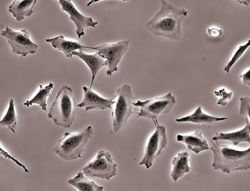First Report: Lesser Used Biopsy Tells More
Study first to report Sentinel Lymph Node biopsy less commonly used in cervical cancer yields three fold higher lymph node metastases detection over standard lymphadenectomy, and offers proven reduced complications for patients.
For the first time ever reported in cervical cancer, Sunnybrook researchers have shown higher detection of lymph node metastases, one of the most telling factors about the course of disease, using Sentinel Lymph Node biopsy compared to complete pelvic lymphadenectomy, in a study published in Gynecologic Oncology.
"These findings inform a newer way of thinking about the management of cervical cancer," says Dr. Allan Covens, surgical oncologist and head, Gynecology Cancer Care Team, Sunnybrook's Odette Cancer Centre.
"In our view, complete lymphadenectomy as a gold standard for lymph node assessment in cervical cancer is cogently challenged. More frequent use of Sentinel Lymph Node biopsy in cervical cancer detects more lymph node metastases, which may have a positive overall impact on survival," he says
"Our findings of higher lymph node metastases (including micrometastases) detection using Sentinel Lymph Node biopsy together with known reduced complications for patients and low false-negative rates, suggest a strong efficacy advantage of this procedure over the standard complete pelvic lymphadenectomy procedure in early stage cervical cancer," says Dr. Covens, who is also a professor of Obstetrics and Gynecology, and director of the Gynecologic Oncology Fellowship at the University of Toronto.
Findings indicate a lymph node metastases detection rate almost threefold higher with Sentinel Lymph Node biopsy compared to pelvic lymphadenectomy. All sentinel lymph node metastases were smaller than one centimetre.
Despite continued yearly declines in mortality rates for cervical cancer, in 2009 an estimated 1,300 Canadian women were diagnosed with cervical cancer and an estimated 380 women died from the disease.
PDF / View full media release »





